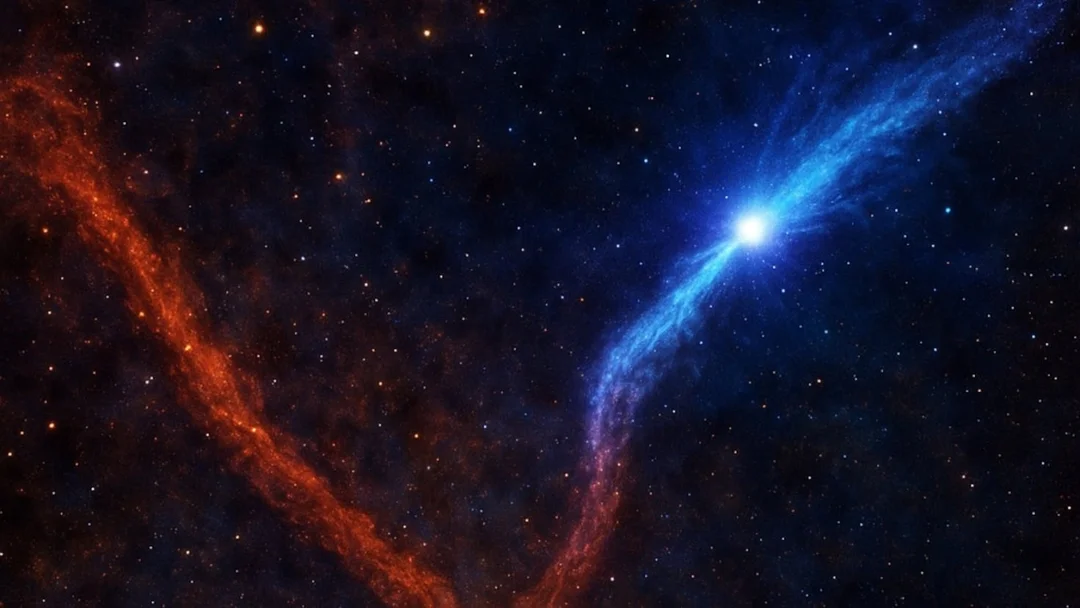
Cosmic Collision: Pulsar Slams into Milky Way’s ‘Snake’ Filament at 1.8 Million MPH
Imagine a bone fractured not by earthly trauma, but by a cosmic collision. That's precisely what NASA's Chandra X-ray Observatory has revealed in our very own Milky Way galaxy. A galactic center filament, nicknamed the 'Snake,' has been struck by a pulsar moving at an astounding 1.8 million miles per hour (3 million km/h), leaving a visible 'fracture.' This discovery, detailed in the May 2024 issue of the Monthly Notices of the Royal Astronomical Society, offers unprecedented insights into the violent dynamics at play in the galactic center.

The 'Snake,' officially known as G359.13142-0.20005 (or G359.13), is one of the brightest and longest galactic center filaments observed, stretching a colossal 230 light-years. Located approximately 26,000 light-years from Earth, this structure is actually a massive formation created by radio waves threading along magnetic fields. But what caused the peculiar 'kinks' or fractures along its seemingly straight path?
Researchers led by astrophysicist Farhad Yusef-Zadeh from Northwestern University have identified a compact radio and X-ray source coinciding with the most significant bend. This source, they believe, is a pulsar—a rapidly spinning, highly magnetized neutron star—ejected at immense speed following its parent star's supernova. The impact of this high-speed projectile has distorted the Snake's magnetic structure, producing the observed fracture and enhanced X-ray emissions.
"We argue that the major kink is created by a fast-moving object punching into the Snake, distorting its magnetic structure, and producing X-ray emission," the researchers explained in their published paper. This cosmic hit-and-run highlights the significant influence that fast-moving celestial objects can have on large-scale galactic structures.
Pulsars have long been considered fascinating celestial objects, but their role in directly impacting and altering such massive structures wasn't fully appreciated. This discovery opens up new avenues for understanding how these dense remnants of supernova explosions can interact with their surroundings, potentially even influencing structures far beyond their immediate vicinity. Could this pulsar eventually exit the Milky Way? Astronomers are currently investigating this possibility, given the pulsar's speed and trajectory. However, its vast distance poses a significant challenge to any imminent escape.
This cosmic event acts as a reminder of the dynamic and often violent processes shaping our galaxy. The collision provides valuable insights into the interplay between fast-moving objects and magnetic fields in the galactic center, offering a new perspective on the evolution of galactic structures. What other secrets does the galactic center hold, waiting to be revealed through future observations?
What do you think about this cosmic collision? Share your thoughts and theories in the comments below!